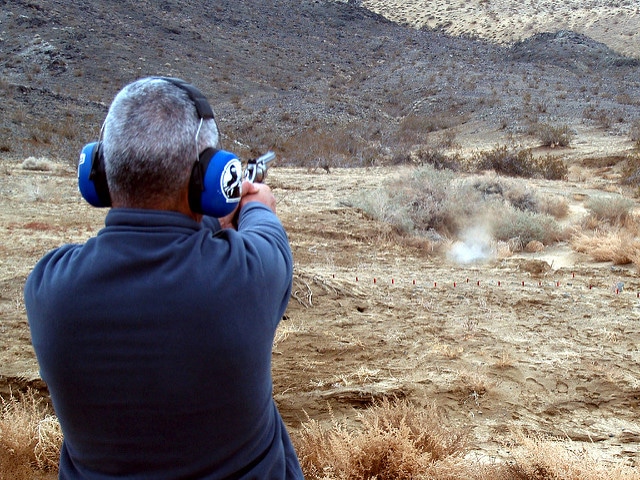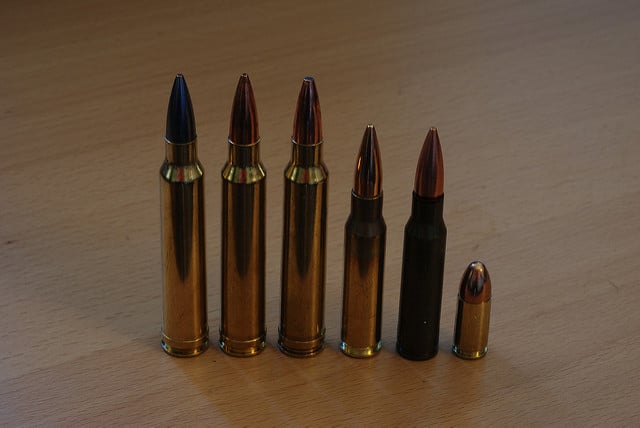The smell of powder and the plink of bullets, steel targets are the best. They are available in all shapes, sizes, and colors – from 4″ gongs to silhouettes and stars to trees. Steel is a great option for those that don’t want to retrieve and replace tattered targets every little while, giving shooters more time shooting, and less time swapping paper out. Steel targets are also a great option for the cost-conscious marksman, seeing as a basic good quality target can be found for under $50, and can last hundreds of rounds with proper care. There are several factors that can lead to a great experience with steel.

https://www.flickr.com/photos/simonov/ https://creativecommons.org/licenses/by-sa/2.0/
Steel
Steel can be extremely dangerous if the correct grade isn’t used. Steel is measured on the Brinell Hardness Scale, where it is assigned a number (BHN). The recommended BHN for rifles is AR550, and AR500 can be used for handguns. Using anything “lower” than the AR550 or AR500 for range time is risky business. If a round hits weak steel and creates a pit, the ricochet is unpredictable. It is also important to note that once a target gets damaged or has an uneven surface, it should be retired. A few great professional companies to purchase steel targets from are MGM Targets, X Steel Targets, Defense Targets, and Shoot Steel.
Distance
Another factor to ensure a safe day out at the range is distance. Every manufacturer has different specifications for their products, so it is crucial to check the owner’s manual before heading out to the range. The “standard” seems to be a 15-yard minimum distance from steel with handguns, and a 100-yard minimum with rifles, but again, any steel target should have its specifications in the owner’s manual. To make targets more visible at longer distances, florescent spray paint can be applied as necessary.
Stands, Bolts, Angle
Lots of manufacturers have stands for targets that allow them to be “tilted” at a downward angle, directing ricochets and fragments into the ground. It’s a great option for a bit more protection. Bolts and hardware shouldn’t be exposed on the front of the targets, because they can cause unpredictable ricochets.

https://www.flickr.com/photos/sloth2048/ No changes made. https://creativecommons.org/licenses/by/2.0/
Ammo
Here’s the best summary for this section from Guns & Ammo, “Never shoot green-tip or bi-metal bullets at steel targets of any kind because they will dimple and deform the target, radically increasing the likelihood of a ricochet. Plus, these “penetrator” projectiles will wreak havoc on your target.” Taking proper care of targets allows them to last for a good amount of time and ensures safe practice.
Other Considerations
Eye and ear protection is always necessary when shooting, especially with steel, for both the shooter and anyone in the area. Shooting steel can be dangerous and precautions should be taken to prevent injury.
